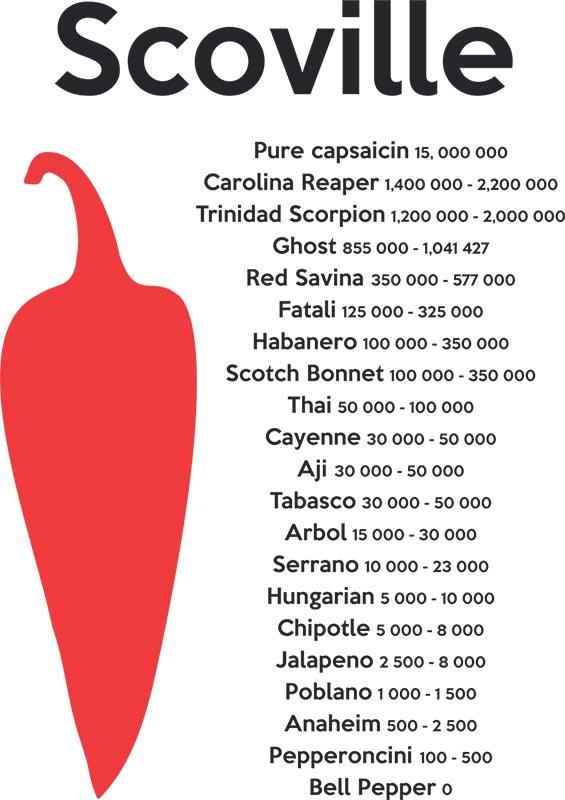
If you’re a fan of spicy foods, you’re probably familiar with the Scoville Heat Unit scale, a measurement that quantifies the spiciness or heat level of different peppers. Have you ever taken a bite of a chili pepper and felt an intense, fiery sensation that left your taste buds tingling and your mouth on fire?
Let’s dive into the world of Scoville Heat Unit Scale and uncover the science behind this fiery phenomenon.
The Scoville Heat Units scale was developed in 1912 by Wilbur Scoville, an American pharmacist, to measure the heat intensity of chili peppers. Scoville’s method involved creating a pepper extract and diluting it in sugar water until the heat was no longer detectable to a panel of taste testers. The degree of dilution required to reach this point determined the pepper’s Scoville Heat Units. For instance, if a pepper had a Scoville rating of 500, it meant that its extract needed to be diluted 500 times before the heat was no longer felt.
In the modern era, the Scoville Heat Units scale has evolved to accommodate more accurate and consistent methods of measurement. High-performance liquid chromatography (HPLC) and gas chromatography are now used to determine the concentration of capsaicinoids, the compounds responsible for the spicy sensation in peppers. Capsaicinoids bind to receptors in our mouths and trigger the perception of heat, leading to the burning sensation associated with consuming spicy foods.
At the milder end of the Scoville scale are bell peppers and sweet banana peppers, which have a Scoville rating of 0, meaning they lack the heat-producing capsaicinoids altogether. Moving up the scale, you encounter jalapeños with an SHU of 2,500 to 8,000, adding a noticeable kick to dishes. The popular serrano pepper falls within the range of 10,000 to 23,000 SHU, while the fiery habanero pepper can reach up to a scorching 350,000 SHU. For those who dare to venture into extreme heat territory, the infamous Carolina Reaper holds the record with an astonishing 1.6 million SHU or more.
The beauty of the Scoville Heat Units scale lies in its ability to guide spice enthusiasts in selecting the perfect pepper for their culinary creations. While some might prefer a subtle warmth to enhance the flavors of a dish, others seek the thrill of an intense, sweat-inducing experience. The scale also plays a pivotal role in the hot sauce industry, as manufacturers proudly display the SHU rating on their labels, allowing consumers to gauge the heat level before purchasing.
In conclusion, Scoville Heat Units provide us with a standardized way to measure and understand the spiciness of peppers. From the mild to the mouth-numbingly hot, each pepper variety has a place on the Scoville scale, offering a range of experiences for adventurous eaters. So, the next time you’re eyeing that chili pepper in the grocery store, take a moment to appreciate the journey of flavor and heat it’s about to embark you on, all thanks to the science of Scoville Heat Units.